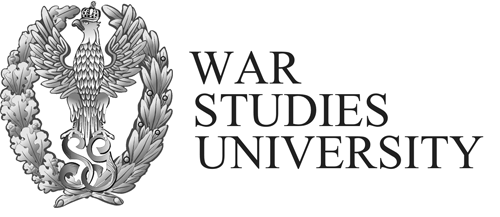Global security discourse remains an evolving landscape and is marked by renewed interstate conflicts. A topic that continues to maintain relevance, however, is that of terrorism. A theory of ISIS: Political violence and the transformation of the global order by Mohammad-Mahmoud Ould Mohamedou goes beyond the superficial reductionist understandings of ISIS that prevail in common discourse. Mohamedou does not merely present ISIS as the cult-like extremist group that one may initially understand it to be, but carries out a clinical tracing of its root cause to provide a more holistic view of it. An evaluation of the book reveals the many benefits of theorising conflict beyond rigid realist frameworks and how a more nuanced approach grounded in history and culture can benefit security discourse. This review contends that Mohamedou’s theorisation of ISIS exemplifies how security analyses grounded in postcolonial and post-structural perspectives can provide nuanced and more effective frameworks compared to the conventional paradigms that dominate policy discussions.
The book first introduces the need for a shift in the way we understand the Islamic State and critiques contemporary narratives. Further, it contextualises ISIS in a broader landscape of political violence and establishes Mohamedou’s main argument, that is, ISIS is a product of historical forces and postcolonial occurrences. Subsequently, in Chapter 2, the book studies the history of Al-Qaeda and how ISIS developed as a break-off group under its franchise model. Understanding Al-Qaeda, according to Mohamedou, becomes instrumental to understanding ISIS.
It further explores the differences between the two groups and then dissects ISIS’s methods of communication with and influence over the West. Mohamedou concludes the book with a compelling argument as to how the growth of ISIS is a form of returning colonialism to the West, or as he puts it, a “colonial boomerang.” In his analyses, Mohamedou considers a post-colonial lens and takes into account the histories of the region in which the group emerged. Quite admirably, Mohamedou challenges the outside-looking-in gaze of Western powers and contextualises the rise of ISIS using the American interventions in Libya and Iraq. This counters the tendency in the political realm to hyper-simplify ISIS’s motivations and brings to attention the complex mechanisms surrounding modern-day terrorism.
Mohamedou’s analyses can be contextualised in wider discourse relating to Islamist terrorism and Daesh in relation to terror-related discourse at the time. The book establishes itself as a fresh perspective amongst post-9/11 terrorism discourse. Mohamedou’s (2018) main argument is that much of the existing literature was drawn from reductionist journalism and narrowly driven security analysis. Resultantly, the book, at the time of publication, became a starkly differentiated piece of literature on understanding ISIS because of how it called out the orientalist underpinnings of the existing literature.
Amongst the present day Islamic terrorism and Daesh-related discourse, Mohamedou’s book remains important. In recent times, literature and analysis that deem ISIS to be a “fundamentally religiously ideological extremist group” remains (Hansen, 2020). Also, much of newer literature focuses on the operational structures or evolving governance styles of ISIS (Bamber-Zryd, 2022). Further, researchers focus on its propaganda strategies, how it spreads via the Internet, and even possible methods to counter it. Mohamedou’s work continues to occupy a special space in ISIS and terror-related discourse because of its approach, which is driven by postcolonial and deconstructionist nuance. His work engages with the symbolic and discursive structures of Daesh and offers an understanding that not only complements but also challenges more policy-centric/orientalist studies.
What sets Mohamedou’s methodology apart is his conscious deviation from conventional security paradigms. His poststructuralist and postcolonial contextualisation of ISIS goes beyond the traditional realist/liberal frameworks that focus on imminent threats, bargaining range models, and zero-sum games. This provides essential corrective nudges for mainstream narratives surrounding ISIS. Particularly effective is his approach towards a historical retracing of ISIS’ roots in Al-Qaeda while linking each stage to colonial legacies (e.g. US invasion of Iraq) and showing how policies and discourse, over time, led to the formation of ISIS. Equally important is Mohamedou’s engagement in intensive discourse analysis of Western media, policy speeches, and naming practices. Together, these approaches remain the pillars on which Mohamedou has built his argument and critique.
The book’s critique of the existing narratives further gains merit when placed in a wider theoretical context. It finds roots very directly in Edward Said’s theorisation of Orientalism. According to Said (1978), through a process of “othering,” Western culture finds “strength and identity by setting itself off against the Orient as a sort of surrogate and even an underground self.” Mohamedou points out these Orientalist tendencies in the narratives surrounding ISIS in Western media and security discourse. It also bolsters Mohamedou’s contention that people find themselves vulnerable to joining ISIS because of this “othering” or, as Mohamedou (2018, p. 148) puts it, “alienation.” Mohamedou, therefore, successfully brings out a much overlooked aspect of security discourse—colonial legacies and historical contexts.
Furthermore, the book also fits convincingly into the securitisation theory as proposed by the Copenhagen School. Within the securitisation framework, one can fit Mohamedou’s argument of religious identity being used to oversimplify and “name and frame.” The speech act includes the association of Islam with terror and reducing ISIS to merely religious in nature. One of the examples that Mohamedou provides is the inconsistent use of the word “terrorism.” Mohamedou (2018, p. 4) asserts that mainstream media resorts to it “reflexively when attacks have Muslims associated with them, and opting for another terminology (‘attack’, ‘shooting’, ‘security incident’, ‘assault’, ‘situation’, etc.) when events of a similar nature have different types of perpetrators involved.” This framing of ISIS removes significant political context and enables those involved in the security discourse to advocate for extraordinary measures (Mohamedou (2018, p. 59) even mentions serious torture techniques implemented by the US army).
Mohamedou’s holistic approach, therefore, presents a sound theorisation of the emergence and success of ISIS. However, a point of critique would be that he entirely reframes the emergence of ISIS as a response to Western imperialism, which takes away the agency of the individuals involved. By emphasising external causation, Mohamedou sometimes underplays the role of theological innovation, the nature of individuals like Abu Musab al-Zarqawi, and the regional sectarian tensions caused by Al-Qaeda’s franchise model, which shaped ISIS’s evolution. In this regard, Mohamedou slightly leans into the realist tendency to personify actors in a conflict and reduce their dimensions. For instance, in bringing in the Western perspective, he overlooks ISIS’s hostility and atrocities towards certain Muslim groups, like the Shia community (Hawley, 2017). While there is the mention of important individuals like bin Laden and al-Zarqawi, the book could elaborate more on ISIS’s success in brand-building through the hollywoodization of violence.
Nevertheless, Mohamedou’s theorisation does an exemplary job of contextualising ISIS and provides an improved perspective to be considered in security discourse. Through his lens, we find the tools required to design comprehensive security measures not just for one organisation but also the evolving landscape of global security relating to terrorism. This could be useful in conflict and terrorist-ridden areas around the world. For instance, Kashmir’s terrorist issues cannot be considered without understanding the Partition context, and Burkina Faso’s issues cannot be understood without understanding French colonial legacies (Vision of Humanity, 2024), etc. The absence of such nuanced approaches has aggravated policy failures in these regions, where counterterrorism strategies often address manifestations of violence without considering the historical grievances and structural inequalities that fuel conflict. Mohamedou’s framework, therefore, has significant implications for both academic theories of security and policy formulation beyond ISIS.
Overall, Mohamedou’s A theory of ISIS: political violence and the transformation of the global order provides significant contributions to the realm of security studies by offering the much needed corrective perspectives and novel approaches to deconstructing terrorism-related conflict. The book’s greatest strength lies in its refusal to isolate ISIS from the historical forces that shaped it. Although it risks going to the extreme of turning ISIS entirely into an organisation that emerged as a response to Western interventionism, it compels readers to reconsider their fundamental assumptions about terrorism and security discourse.




